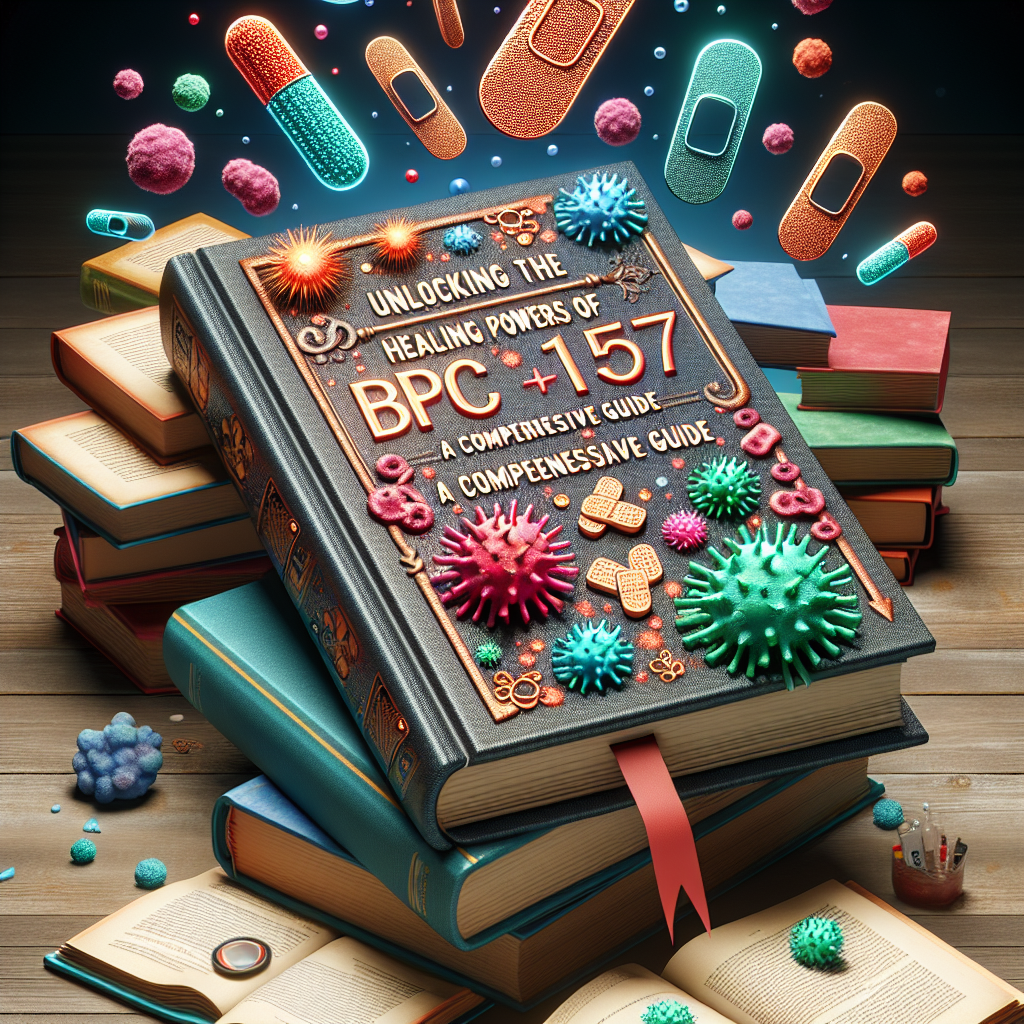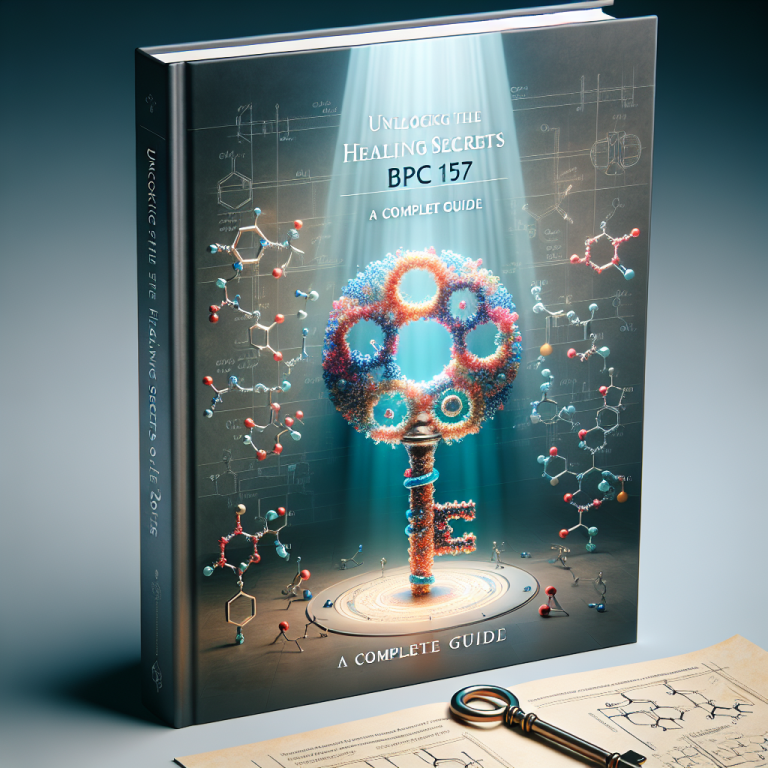BPC 157: Understanding Its Mechanism of Action and Potential Health Benefits
BPC 157, a peptide consisting of 15 amino acids, has been the subject of considerable interest within the scientific community due to its potential therapeutic effects. Derived from a protein found in stomach secretions, BPC 157 exhibits a promising range of biological activities, particularly in healing and recovery processes. Understanding its mechanism of action and the potential health benefits it offers can provide significant insights into its application in medicine.
The primary mechanism through which BPC 157 operates involves its influence on angiogenesis, the process of new blood vessel formation. This particular action is critical as it enhances the blood supply to damaged tissues, thereby accelerating healing. BPC 157 stimulates the formation of endothelial cells, which are essential for new blood vessel growth. This capability not only makes it a potent agent for healing wounds but also provides a foundation for its use in treating conditions characterized by poor blood flow and tissue damage.
Furthermore, BPC 157 exhibits an exceptional ability to modulate the body’s production of nitric oxide, a molecule that plays a pivotal role in vascular health by enhancing blood flow and reducing blood pressure. This modulation aids in preventing and reversing damage in blood vessels, suggesting a protective role in cardiovascular health. Additionally, the peptide has been observed to protect endothelial cells against toxins, further underscoring its potential in managing vascular diseases.
Another significant aspect of BPC 157’s action is its impact on the gastrointestinal tract. It has been shown to have protective effects against ulcers and inflammatory disorders such as Crohn's disease and colitis. This is largely attributed to its ability to enhance the integrity of the mucosal lining, which serves as a barrier against irritants and pathogens. By strengthening this barrier, BPC 157 helps reduce inflammation and promote healing in the gastrointestinal system.
Moreover, BPC 157’s healing properties extend to the musculoskeletal system. Research indicates that the peptide can significantly accelerate the repair of bones, muscles, ligaments, and tendons. This is particularly relevant in sports medicine, where rapid recovery from injuries is crucial. By promoting cell survival and migration, BPC 157 helps in the quick regeneration of injured tissues, potentially reducing recovery times and improving functional outcomes.
The neuroprotective properties of BPC 157 also merit attention. Preliminary studies suggest that it may help in the regeneration of nerve tissue and improve neurological function following a traumatic injury or stroke. This is especially significant given the limited regenerative capacity of nervous tissue, which makes recovery from neurological injuries a complex challenge.
Despite these promising findings, it is important to note that most of the research on BPC 157 has been conducted in animal models, and clinical data in humans are still relatively sparse. The translation of these results into clinical practice requires more extensive human studies to establish not only the efficacy but also the safety profile of BPC 157.
In conclusion, BPC 157 holds a multifaceted potential in medical science, particularly due to its angiogenic, gastroprotective, musculoskeletal healing, and neuroprotective effects. As research progresses, this peptide could become a cornerstone in the treatment of a variety of conditions, offering hope for enhanced healing and recovery in scenarios where current medical solutions are limited. The continued exploration of its mechanisms and effects will be crucial in unlocking its full therapeutic potential.
The Role of BPC 157 in Accelerating Wound Healing and Tissue Repair

BPC 157, a peptide consisting of 15 amino acids, has garnered significant attention within the medical and scientific communities for its remarkable therapeutic effects, particularly in the realm of wound healing and tissue repair. This peptide, derived from a protein found in stomach secretions, has not only demonstrated a capacity to accelerate the healing of many different wounds but also to promote healing in damaged tissues, including tendons, ligaments, and nerves.
The role of BPC 157 in enhancing the body's natural healing processes is multifaceted. Initially, its mechanism involves the modulation of growth factors which are critical in the regeneration of blood vessels. This is particularly vital because adequate blood supply is essential for delivering the necessary nutrients and oxygen to injured tissues, which in turn speeds up the healing process. Furthermore, BPC 157 stimulates the formation of new blood vessels, a process known as angiogenesis, which enhances tissue repair and wound healing.
Moreover, BPC 157 has been shown to have an anti-inflammatory effect, which is crucial in the initial phase of wound healing. Inflammation, while a natural part of the healing process, can become detrimental if it is excessive or prolonged. By mitigating excessive inflammatory responses, BPC 157 helps to prevent the formation of scar tissue and facilitates a more efficient healing process. This peptide also influences the production of collagen, the most abundant protein in the body, which plays a critical role in wound healing. By promoting collagen formation, BPC 157 not only accelerates wound closure but also improves the tensile strength of the newly formed tissue, thus enhancing the overall quality of the repair.
The therapeutic potential of BPC 157 extends beyond just superficial wounds; it is also effective in promoting healing in more complex tissues such as muscle, tendon, and even the nervous system. Studies have indicated that BPC 157 enhances tendon-to-bone healing by improving the recruitment of tendon cells at the injury site and promoting their proliferation. This is particularly significant as tendon injuries are notoriously slow to heal, and treatments are limited in their effectiveness.
Additionally, BPC 157 has shown promise in neuroprotective effects, which are beneficial in the healing of nerve tissue and potentially impactful in treating conditions associated with nerve damage. Its ability to facilitate the repair of injured nerves could make it a valuable tool in treating a range of neurological conditions.
Despite these promising results, it is important to note that the majority of research on BPC 157 has been conducted in animal models. While these studies provide valuable insights into the potential applications of BPC 157 in humans, clinical trials are necessary to fully understand its efficacy and safety in human subjects. Such trials would help delineate the optimal dosing, administration routes, and treatment durations for various types of injuries and tissues.
In conclusion, BPC 157 holds a considerable promise as a therapeutic agent for accelerating wound healing and tissue repair. Its ability to modulate several key processes involved in the healing response, from reducing inflammation to promoting collagen production and angiogenesis, positions it as a potentially invaluable tool in medicine. As research progresses, and with further clinical validation, BPC 157 could redefine approaches to recovery and rehabilitation in patients with diverse types of tissue injuries.
Exploring the Safety and Efficacy of BPC 157 in Human Clinical Trials
BPC 157, a peptide comprising 15 amino acids, has garnered significant attention within the scientific community due to its potential therapeutic benefits. Originally isolated from human gastric juice, BPC 157 is believed to promote healing in various tissues, including skin, muscle, bone, and tendons. This peptide has demonstrated promising results in preclinical studies, particularly in enhancing wound healing and tissue regeneration. Consequently, the transition to human clinical trials has been a crucial step towards validating its efficacy and safety in humans.
The journey of BPC 157 from laboratory research to clinical trials illuminates its potential as a therapeutic agent. In animal models, BPC 157 has shown remarkable capabilities in accelerating wound healing processes and improving angiogenesis—the formation of new blood vessels, which is vital for repairing damaged tissues. Moreover, studies have indicated that BPC 157 may possess anti-inflammatory properties, reducing swelling and redness at injury sites without significant side effects. These promising results have paved the way for human trials, which are essential to ascertain the peptide's therapeutic viability and safety profile in human subjects.
Human clinical trials focusing on BPC 157 have begun to shed light on its therapeutic potential and safety. One of the primary concerns in translating animal research findings to human use is the difference in physiology between species, which can lead to different pharmacokinetic and pharmacodynamic responses. Therefore, initial human trials have been designed as phase I studies, primarily aimed at determining the safety, tolerability, and pharmacokinetic properties of BPC 157. These studies are crucial as they help identify any potential adverse effects that were not evident in animal studies.
Furthermore, phase II and III trials are instrumental in assessing the efficacy of BPC 157. These trials typically involve a larger number of participants and focus on specific clinical outcomes, such as the healing rate of skin wounds or recovery from muscle injuries. For instance, in trials involving patients with tendon injuries, BPC 157 has been evaluated for its ability to enhance tendon repair and function. Results from these studies are promising, indicating that BPC 157 may significantly reduce recovery time and improve functional outcomes in patients with soft tissue injuries.
However, while the initial results from human clinical trials are encouraging, they are not without limitations. The number of participants in these studies is often small, and the study designs can vary, making it challenging to draw definitive conclusions. Moreover, long-term safety data on the use of BPC 157 is still lacking, necessitating further research. Researchers also need to consider the potential for placebo effects and ensure rigorous controls in future studies to validate the findings.
In conclusion, BPC 157 presents a potentially groundbreaking therapeutic peptide with its regenerative and healing capabilities. The transition from preclinical to human clinical trials marks a significant step in understanding its potential and limitations. While current research provides a basis for cautious optimism, comprehensive clinical trials are essential to fully ascertain the safety and efficacy of BPC 157 in treating various conditions. Continued research and rigorous trials will be crucial in determining whether BPC 157 can be integrated into standard therapeutic regimens for tissue healing and repair.

